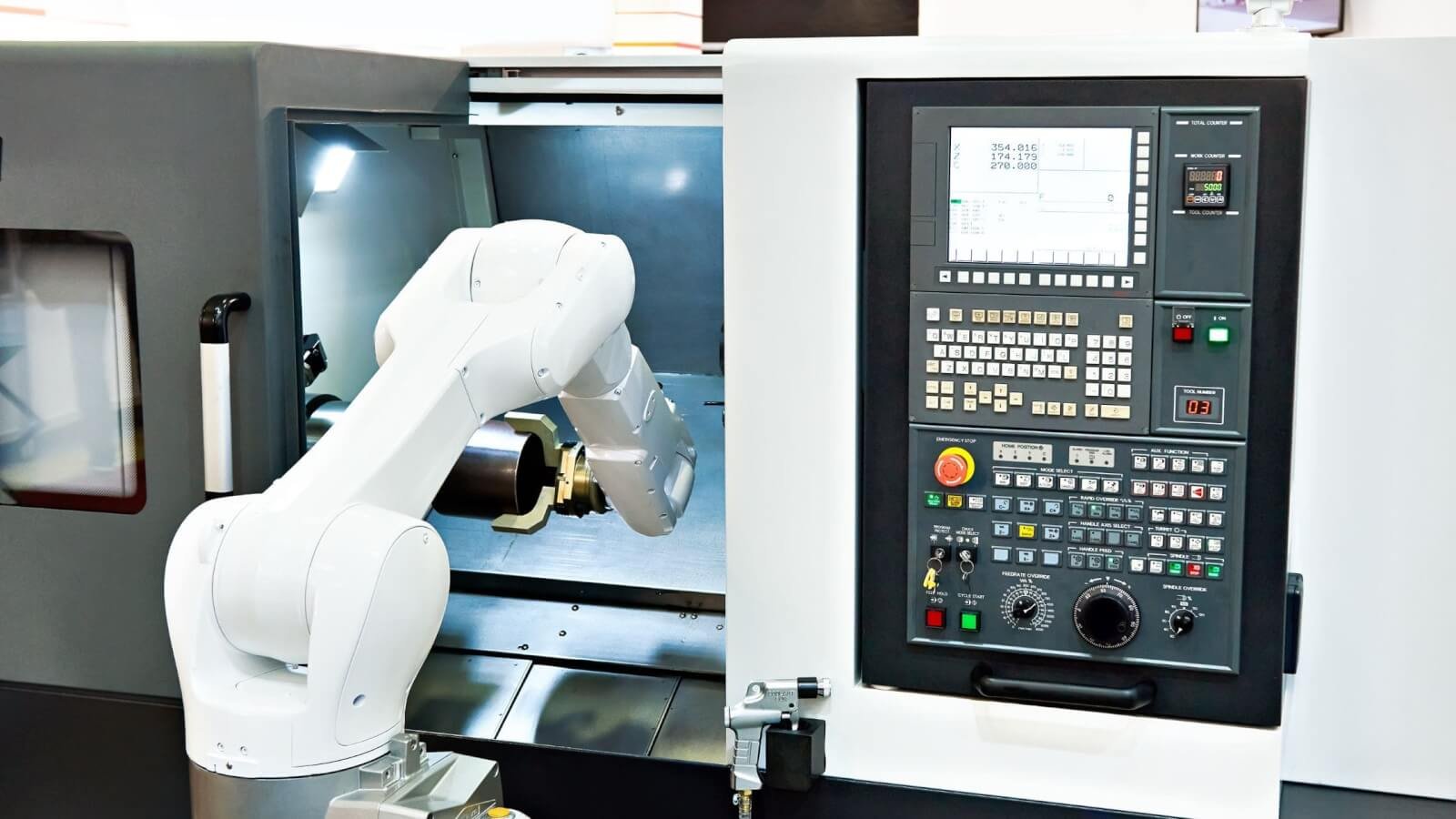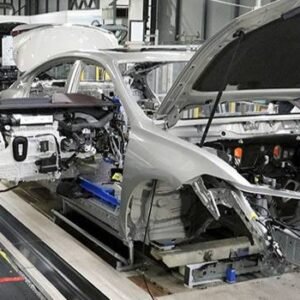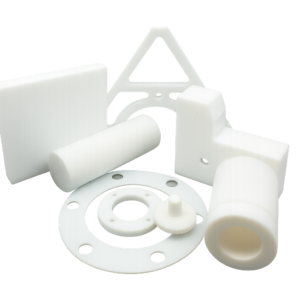CNC robotics and automated machining have witnessed unprecedented growth in recent years, becoming integral components in advanced manufacturing environments. CNC robotics combines the precision of CNC machines with the flexibility and automation capabilities of industrial robots. This integration significantly enhances productivity, precisão, and operational efficiency. This detailed guide explores CNC robotics in-depth, highlighting its benefits, common applications, and comparisons with conventional CNC machining processes.
Introduction to CNC Robotics and Automated Machining
The manufacturing industry’s continuous evolution has led to the widespread adoption of robotic automation in CNC machining processes. While CNC machines historically represented precision manufacturing, robotics integration offers superior automation, versatilidade, e eficiência. Junto, CNC machining and robotics blur the traditional boundaries, driving industrial automation forward.
What Is CNC Robotics?
CNC robotics refers to robotic systems specifically designed to complement or enhance CNC machining processes. These robotic systems are equipped with advanced sensors, actuators, controllers, and software enabling automated handling, manipulation, and processing of components. CNC robotics reduce reliance on manual operators, enhancing repeatability, eficiência, e precisão.
Unlike traditional CNC machines—which require operator interaction to load and unload workpieces—CNC robotics operate autonomously following programmed instructions, greatly minimizing human intervention.
Advantages of CNC Machining for Producing Robotic Parts
Usinagem CNC remains the most favored method for producing high-quality robotic components. Several critical advantages justify its widespread adoption in manufacturing robotics:
Increased Speed and Efficiency
CNC machining offers rapid turnaround times and exceptional production speed. Custom robotic parts, dependendo da complexidade, can be manufactured within just 1–3 days, facilitating faster prototyping and iteration cycles.
Exceptional Dimensional Accuracy
Precision is paramount in robotics. CNC machining consistently achieves tight tolerances (up to ±0.0002 inches or ±0.005 mm), ensuring robotic components operate smoothly, predictably, and with high repeatability.
Broad Material Compatibility
Robotic components often require robust materials like aluminum alloys, Aça, titânio, and engineering plastics. CNC machining effectively handles these diverse materials, allowing engineers to optimize performance, peso, força, e custo.
Acabamento de superfície superior
CNC machining delivers excellent surface finishes, typically Ra 0.8 μm or lower, essential for minimizing friction and enhancing durability. Additional finishing processes like polishing, revestimento, and anodizing further enhance component performance.
CNC Machining and Robotics Industry Integration
CNC machining and robotics are interconnected in modern manufacturing. CNC machining produces critical robotic components, while robots increasingly automate CNC machining operations.
Common Robotic Parts Made with CNC Machining
CNC Robotic Arms
Robotic arms replicate human-like motion to handle tasks requiring precise movement and strength. Common materials include aluminum, aço, e plásticos reforçados, machined precisely for mechanical stability.
End Effectors
End effectors, including grippers, vacuum attachments, and specialized tools, directly interact with products or materials. CNC machining precisely crafts these critical attachments for exacting applications.
Custom Jigs and Fixtures
Jigs and fixtures securely hold workpieces during robotic operations, ensuring repeatable positioning. CNC machining customizes these devices economically and efficiently.
Sensors and Controllers
Sensors and controllers rely heavily on precision-machined printed circuit boards (PCBs). CNC machining overcomes traditional chemical etching limitations, garantindo precisão, environmental safety, e confiabilidade.
Common Robots Used in CNC Machining
Articulated Robots
With rotary joints allowing multiple axes of movement, articulated robots handle complex machining, conjunto, soldagem, and material handling operations. Their flexibility and versatility make them prevalent across industries.
SCARA Robots (Selective Compliance Assembly Robot Arm)
SCARA robots provide precise, high-speed performance for repetitive assembly tasks, component inspection, and packaging operations, ideal for compact workspace integration.
Delta Robots
Known for rapid pick-and-place tasks, delta robots offer superior speed and precision, ideal for sorting, embalagem, and assembly operations on conveyor lines.
Gantry (Cartesian) Robots
Operating along linear axes (X, S, Z), gantry robots manage heavier payloads and larger workspaces, making them ideal for material handling, embalagem, loading/unloading, and precision cutting tasks (laser or waterjet cutting).
Benefits of Robotics in CNC Machining Operations
Integrating robotics into CNC machining processes offers significant operational advantages, Incluindo:
Enhanced Production Speed
Robotic automation ensures continuous, uninterrupted operations, significantly reducing production cycle times. Robots maintain consistent output even during prolonged, repetitive tasks.
Improved Manufacturing Precision
Robotic systems achieve exceptional positional accuracy during loading, unloading, and component handling operations, typically maintaining precision within ±1 mm, greatly enhancing manufacturing consistency.
Optimal Surface Finishes
Robotic handling ensures precise alignment and minimizes surface imperfections, improving the quality and consistency of finished products.
Multitasking Capabilities
Robots efficiently handle simultaneous operations like loading/unloading, Inspeção, e embalagem, maximizing productivity while CNC machines perform primary machining tasks.
Differences Between CNC Machines and CNC Robotics
Despite overlapping functions, CNC machines and CNC robots exhibit key performance differences:
Precisão
CNC Machines: Achieve ultra-high precision (±0.02–0.05 mm), with specialized Swiss lathe systems offering even finer tolerances.
Robótica CNC: Generally achieve ±0.1–0.2 mm precision, focusing more on repeatability than absolute accuracy.
Versatilidade
CNC Machines: Specialized for precise machining tasks like milling, girando, perfuração, with limited degrees of freedom.
Robótica CNC: Offer significantly higher versatility, easily adapting to multiple tasks simultaneously with greater degrees of freedom.
Rigidez
CNC Machines: High rigidity (>50 N/µm), ensuring accuracy during heavy cutting and machining of hard materials.
Robótica CNC: Lower rigidity (<1 N/µm), suitable primarily for softer materials like plastics, compósitos, or lightweight metals.
Workspace Size
CNC Machines: Typically offer limited workspace based on their enclosed design.
Robótica CNC: Feature larger, flexible workspace configurations that can be expanded with additional axes.
Affordability
CNC Machines: Cost-effective for repetitive, high-volume precision machining tasks.
Robótica CNC: Offer broader operational flexibility, making them cost-effective for multitasking and complex workflows.
Will CNC Robotics Replace CNC Machines?
While CNC robotics continues to evolve, CNC machines retain superior precision, rigidez, and specialization capabilities. CNC robotics complement rather than replace CNC machines, effectively handling automation tasks and complex motions, while CNC machines remain best suited for ultra-precision machining tasks.
Integration of CNC robotics and CNC machining achieves optimal productivity, precisão, and operational efficiency.
Precisão máxima CNC Machining Services for Robotic Components
Manufacturing precision robotic parts demands a reliable CNC machining partner. Tops Precision provides professional CNC machining services, featuring:
Highly skilled engineering teams and expert CNC operators.
Rigorous quality control and inspection processes.
Voltação rápida, preços competitivos, and superior quality assurance.
Customers can send CAD designs to Tops Precision, receive instant quotations, and obtain automated Design for Manufacturing (DFM) Relatórios.
Tentar Precisão máxima today for efficient and accurate CNC machining services.
Conclusão
CNC robotics represents an exciting advancement in automated manufacturing, seamlessly merging robotic flexibility with CNC precision. As CNC machines remain essential for specialized machining, robotics augment automation, flexibilidade, e produtividade.
Choosing a qualified manufacturing partner ensures optimized outcomes. For professional CNC machining of robotic components, contact Tops Precision and experience unmatched precision, velocidade, and service quality.
Perguntas frequentes
1. What is the main difference between CNC Machines and CNC Robotics?
The core difference lies in Accuracy vs. Versatilidade. CNC machines are built with extreme rigidez (high stiffness) to achieve ultra-high precision (por exemplo., ± 0.02 milímetros) during heavy, specialized cutting tasks. CNC robots have lower rigidity, resulting in slightly less accuracy (por exemplo., ± 0.1 milímetros), but offer much greater flexibilidade, a larger workspace, and better multitasking capabilities (handling, loading, Inspeção, etc.).
2. Why is CNC Machining the preferred method for making robotic components?
CNC machining is preferred because robotic systems demand parts with exceptional precisão dimensional and specific material properties. CNC delivers:
-
Tolerâncias apertadas: Ensuring smooth, repeatable operation of joints and actuators.
-
Compatibilidade de materiais: Effectively processing high-strength materials like specialized aluminum alloys and titanium is required for lightweight, strong robotic arms.
-
Acabamento de superfície superior: Reducing friction and wear on moving parts.
3. Can I use a CNC robot for heavy-duty metal cutting?
It is generally not recommended for heavy cutting (high material removal rates) on hard metals like stainless steel or tool steel. Due to their inherently lower rigidez (compared to a heavy CNC mill), robots are prone to conversa and vibration under heavy load, leading to poor surface finish and reduced accuracy. They are better suited for light materials, finishing tasks (moagem, polimento), or handling/loading operations.
4. Can existing CNC machines be retrofitted with robotic automation?
Sim, most existing CNC machines can be retrofitted to integrate robotics. This typically involves adding an external articulated robot or gantry system dedicated to machine tending (loading and unloading workpieces) or performing secondary operations like part cleaning or inspection. This integration significantly boosts spindle uptime and efficiency without replacing the primary machining asset.
5. What is “creep resistance,” and why is it important in robotic parts made with CNC?
Creep is the slow, permanent deformation of a material under continuous stress, especially at elevated temperatures. In robotics, components like motor mounts and structural joints must maintain their shape precisely over thousands of cycles. CNC machining allows the use of specific, high-performance alloys (por exemplo., specialized aluminum) that have been engineered for excellent creep resistance, ensuring the robot’s long-term positional accuracy and reliability.
6. What types of robots are most commonly used to automate CNC machining operations?
The most common types include:
-
Articulated Robots: Highly flexible, used for complex material handling and machine tending, often reaching multiple machines.
-
Gantry (Cartesian) Robots: Operate along linear axes (X, S, Z), ideal for handling heavy payloads and servicing very large workspaces, often used for loading/unloading large workpieces or pallets.
7. Will CNC Robotics eventually replace traditional CNC machines?
Não, they are generally seen as complementary technologies. Traditional CNC machines will continue to dominate the niche requiring ultra-high absolute accuracy, maximum rigidity, and the ability to perform heavy, demanding material removal. CNC robotics specializes in automação, flexibilidade, e multitasking. Optimal manufacturing utilizes both: the CNC machine cuts the part with precision, and the robot handles it efficiently.
Leia mais:
Guide to CNC Milling and Turning
Understanding Surface Finishes in CNC Machining
CNC Machining Quality Control Procedures





